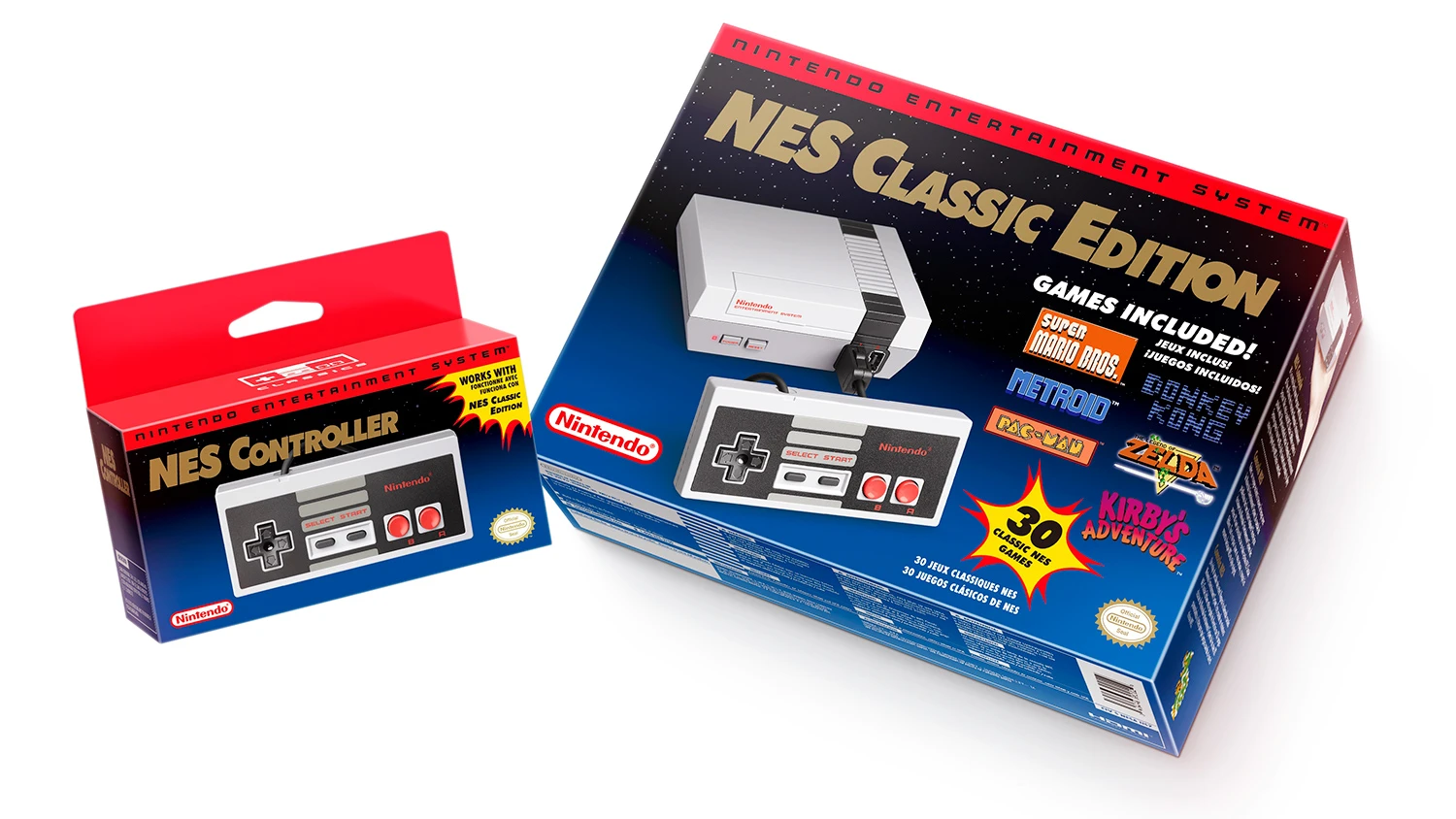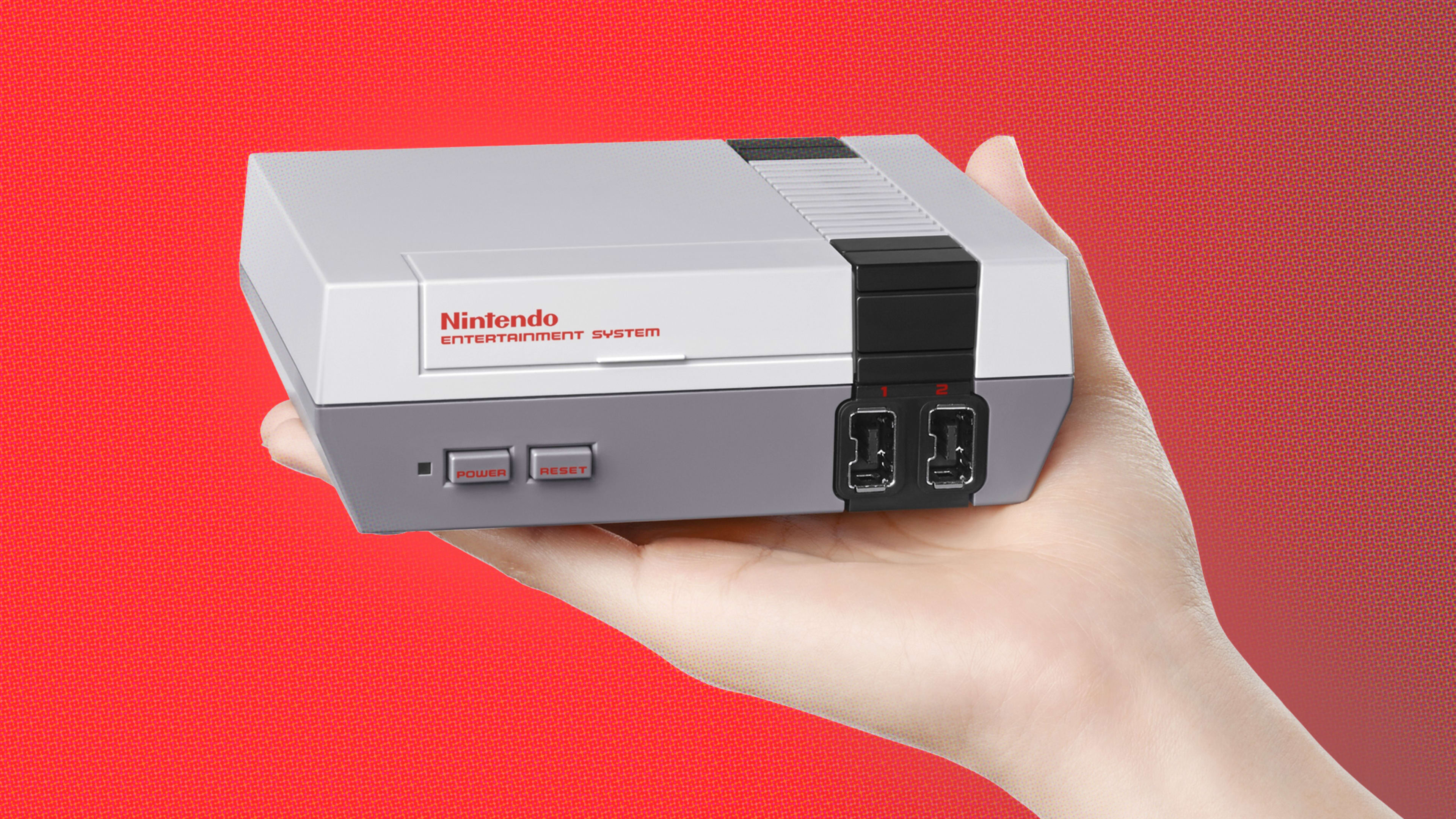In the days of eight-bit gaming, Nintendo was the undisputed king of gaming. Before it became the company of Wii and DS, games like Super Mario Brothers 3 and Duck Hunt dominated the industry. This holiday season, Nintendo’s big release is a pure nostalgia play: The NES Classic Edition, a miniature scale replica of the 1980s Nintendo Entertainment System that comes preloaded with 30 games for $60. It’s scheduled for a November 11 release.
I took the console out for a spin on a recent press visit by Nintendo to Los Angeles. The new console is much smaller than the old-school Nintendo–it fits comfortably in one hand. However, it comes with a full-size replica of the 1980s-era NES controller (more on that later) and connects to a television with a standard HDMI cable.
The NES Classic is preloaded with games ranging from Super Mario Brothers 3 to Tecmo Bowl to Castlevania and Legend of Zelda. It’s essentially a NES greatest-hits selection that’s designed for ease of play. Users are limited to the games that come with the console; new titles cannot be loaded off the internet nor manually added.
I played the NES Classsic games on a large flat-screen television of the sort you see in many offices these days, it’s a far cry from the small analog Toshiba TV I played Nintendo games on back in the 1980s. That’s when one of the most interesting features came into play: Users have the option to simulate the scan lines of an old-school TV, the blocky screen resolution of the old 1980s games, or an engineer-centric mode that promises to show “the games exactly as designed.”
As far as the gaming experience, it’s exactly what you’d expect if (like many of us) you spent your childhood tethered to an eight-bit Nintendo. It packs a lineup of amazing, addictive games and is easy to set up and designed for the nostalgia market–setting up the console doesn’t require anything more complicated than plugging a HDMI cord into a television.

Late To The Game
By releasing the NES Classic, Nintendo also shows off one of its core competencies: Creating a product that’s similar to competitors, but easier to use and much more accessible.
Eight-bit emulators for Nintendo games–software packages which, installed on a computer, tablet, or phone, make it possible to play old NES games–have existed in various states of legality for years for most major devices. However, the emulators require a bit of technical work to install–not enough to make it out of range, but just enough to turn away the unwashed masses of casual users. More importantly, playing emulated Super Mario Brothers 3 on a smartphone just feels weird.
Consumers have also been able to buy all-in-one consoles for different old-school platforms for years. Retro Atari consoles, which came preloaded with a variety of classic 2600 games, began popping up in the early ‘00s. Sega, Nintendo’s great eight-bit and 16-bit rival, licensed its intellectual property to a company called At Games for a similar product called the Sega Genesis Classic Game Console.
But where Nintendo excels is in the little details. The NES Classic games play as flawlessly as they did on the original eight-bit console–users of the Genesis emulator complained of poor playing quality and difficulty saving their games. Touches such as the CRT emulation mode add to the retro feel, and the NES Classic Edition is sturdy enough for handling by a small child.
When I took the NES Classic for a test spin, one thing surprised me: The cord for the controllers is very, very short–far shorter than the approximately eight foot cord on the original NES. Nintendo of America’s David Young told me that one of the reasons for this was to encourage users to keep the console close to them while gaming: The Reset button on the console is used to save games to memory. Young recommends users use a longer HDMI cord to connect the console to a TV.
Ultimately, with this console, users play on Nintendo’s terms, rather than through the anarchy of a Android or Windows emulator. At the same time, there’s a massive fun factor–and it’s designed for sharing, with full two-player mode and easy setup. It all adds up to an engaging piece of retro repackaging.
Recognize your brand’s excellence by applying to this year’s Brands That Matter Awards before the early-rate deadline, May 3.
